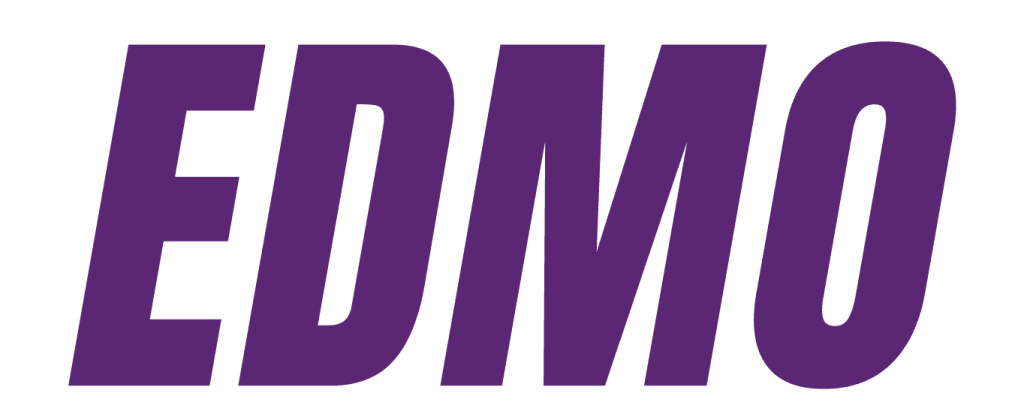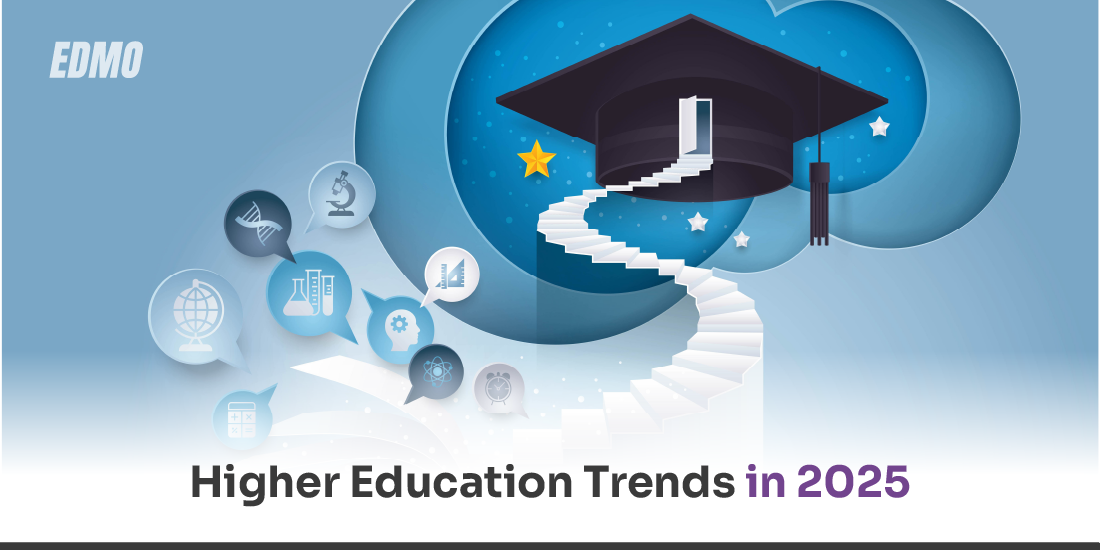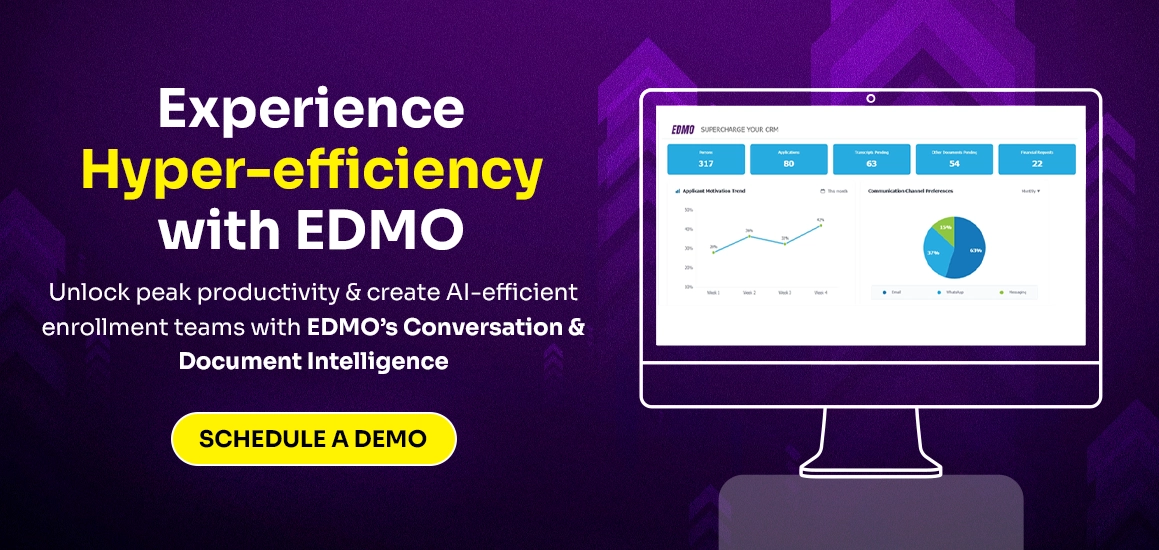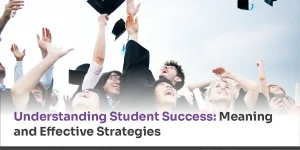In recent years, the education sector has undergone a transformation toward more digital teaching and learning methods. The integration of technology in higher education has led to more engaging and efficient learning experiences, driving advancements in the way institutions deliver education. In this blog, we'll explore the key trends that are reshaping the landscape of higher education in 2025.
Table Of Contents
The global education technology (EdTech) market was valued at USD 142.37 billion in 2023 and is projected to grow at a CAGR of 13.4% from 2024 to 2030. This growth is driven by a shift toward digital and cloud-based learning methods across all levels of education, from primary schooling to professional training.
Advancements in mobile technology, cloud services, and virtual reality are opening new doors for affordable and engaging learning opportunities. These innovations are making education more accessible globally, breaking barriers related to geography and time constraints. However, unequal access to information technology remains a challenge, creating disparities in educational opportunities.
The demand for hybrid and blended learning continues to rise. These methods offer flexibility by combining synchronous (real-time) and asynchronous (self-paced) learning, which is increasingly favored by both students and instructors. The pandemic-driven adoption of technology has also reduced the resistance among educators to incorporate digital tools into teaching, learning, and social interaction.
The integration of coding into education curriculums reflects a growing emphasis on digital literacy. Additionally, standardized testing, like the SAT for university admissions in the U.S., has transitioned to a digital format, making it more accessible and less stressful for students.
What are the areas of positive transformation in the education sector?
Following are the areas of positive transformation in the education sector-
1. The future is liquid learning
Face-to-face classroom learning will be supplemented with synchronous and asynchronous educational materials to allow greater flexibility and customization to the learner’s personality and circumstances. Education will significantly influence producing global citizens and improve employability in this changing educational environment.
Even though students prefer to attend classes on campus, hybrid arrangements and diverse online ways of distribution are here to stay. Not just because social separation and cross-border mobility continue to be an issue for regular attendance at face-to-face sessions but also because they produce more significant outcomes than traditional learning. This adaptability will be mirrored in the development and dissemination of information, instructional approaches, and other academic activities, such as recreational activities, which may become partially virtual.
2. Balancing diversity with inclusion and intellectual freedom
Inside the learning institution, we are witnessing the formation of a new partnership contract based on a growing awareness of diversity. Though much progress has been made in the past few decades to advertise and encourage diversity, there is still room for improvement. Embracing diversity entails more than just achieving an equitable balance in the composition of a university’s various stakeholder groups, from the student population to faculty and management.
It also entails demonstrating consensual respect and consideration for others, especially about gender, sexuality, ethnic background, culture, religious practice, ethnicity, and, more broadly, of all worldviews on what constitutes the good life.
3. Blending the humanities, STEM, and data sciences
Higher education must take a comprehensive approach to train the next generation of world citizens. This necessitates studying the humanities, integrating disparate fields of knowledge, offering breadth and reasoning skills, and linking us with people of all ages and cultures.
At the same time, recruiters want a good foundation in technology literacy, data sciences, and technology, and understanding these areas is vital for would-be entrepreneurs. Any remaining illusions regarding a claimed conflict between the humanities and STEM should’ve been eliminated, thanks to scholarly studies and the reality that many great business people and CEOs have backgrounds in the humanities.
Students increasingly desire hands-on job experience as part of their courses, allowing them to start working the first day following graduation, reflecting the needs of recruiters. Incorporating job assignments, consulting projects, internships, and other efforts based on real-world difficulties may help students gain much-needed practical skills
Trends in higher education
Social Trends
- Diversity in higher education students and faculty: Higher education institutions play a critical role in fostering student success and preparing graduates to compete in a diverse and evolving labor market. Acknowledging the educational advantages of racial and ethnic diversity, educators must actively address obstacles to inclusion. While many institutions claim a commitment to diversity, the practical implementation of these goals has varied widely. Recent trends underscore the complexity of diversity measurement and reporting in higher education. For example, at Harvard University, the percentage of “race-unknown” undergraduate students doubled from 2023 to 2024. This highlights the growing challenge of accurately representing demographic data. By 2027, the federal government will introduce significant changes to how colleges and universities report student race and ethnicity. Among these changes is the inclusion of a separate category for Middle Eastern and North African (MENA) students, who are currently categorized as white. As a result, white enrollment figures at some institutions are expected to decline after 2027, reflecting a more accurate representation of racial and ethnic diversity.
- Mental health awareness: According to the World Health Organization (WHO), one in eight people worldwide lives with a mental disorder, highlighting the global prevalence of mental health challenges. Despite this, only 40% of U.S. schools have a full-time mental health counselor, underscoring a significant gap in available support for students. This lack of resources can have severe consequences, as students with untreated mental health issues are twice as likely to drop out of school compared to their peers. In response to these challenges, schools and universities are increasingly recognizing the need to provide accessible mental health resources and raise awareness. Institutions are adopting strategies such as mental health information sessions during orientation, role-playing, student testimonies, and short videos to destigmatize mental health issues. Some schools, like Drexel University, offer free mental health screenings to encourage students to assess their well-being, using creative approaches such as the “get a checkup from the neck up” campaign to engage students. By addressing mental health challenges early and providing support, institutions can improve students’ behavioral and emotional well-being, ensuring they have the tools needed to succeed academically and personally.
Technological Trends
- Embracing artificial intelligence for learning
- The purpose of technology in education is not just to provide students with knowledge but also to provide access to high-quality instruction.
- It should assist in overcoming time and geographical barriers to create education opportunities for everybody while fostering creativity, curiosity, and cooperation.
- Artificial intelligence (A.I.) is one such technology with enormous potential to achieve these goals in higher education.
- The global AI in education market size was estimated at USD 5.88 billion in 2024 and is projected to grow at a CAGR of 31.2% from 2025 to 2030, driven by the increasing demand for personalized learning experiences.
- Many institutions and colleges are already utilizing A.I. to unload time-sensitive academic and administrative chores, increase enrollment, optimize I.T. operations, and improve student learning experiences.
- The Georgia Institute of Technology, for example, is utilizing A.I. to reduce the workload of academic staff (Korn, 2016).
- The university employs Jill Watson, a virtual assistant, to react to frequently repeated queries asked by pupils in a master’s-level A.I. program.
- While artificial intelligence offers limitless potential for higher education institutions, its acceptance in the education industry remains limited (McKinsey Global Institute, 2017).
- Virtual reality for education
- The global VR in education market was valued at USD 14.55 billion in 2023 and is expected to grow to USD 65.55 billion by 2032, with a CAGR of 18.2%.
- In the U.S., the VR in education market is projected to reach USD 11.36 billion by 2032, driven by innovations in VR-based assessment evaluation and personalized learning experiences.
- VR training improves learning effectiveness by 76% compared to traditional methods.
- Learners in VR courses feel 3.75 times more emotionally connected to the content than those in traditional classrooms and 2.3 times more connected than e-learners.
- VR training enables employees to learn four times faster than in traditional classroom settings, making it a powerful tool for workforce development.
- Universities are increasingly adopting VR in fields like science and medicine for deep learning and immersive experiences.
- Arizona State University uses VR to allow distant students to participate in lab activities as part of its online biological science degree program.
- The technology offers exploratory, contextualized, and interactive learning opportunities, making it a game-changer for global education.
Curriculum Trends
- More focus on closing the skills gap
- As technology progresses, education institutions must adapt, anticipate, and plan for the effect of digitalization on the workforce.
- Higher education institutions should focus on shaping prospective employees by imparting information, skills, and competencies that are in demand in labor markets.
- As a result, there is an urgent need to reinvent degree programs, courses, and curricula, in general, to fulfill the demands of modern learners while keeping up with the changing workforce.
- The 4th Industrial Revolution, propelled by significant breakthroughs in robots, artificial intelligence, and other new technologies, has produced skills shortages across many industries.
- Similarly, the influence of technology-driven automation, the complexities of employment processes, and the dispersion of decision-making in today’s working environment contribute to an increase in skills demand throughout business industries and sectors.
- Furthermore, since the most relevant and valuable combination of abilities for each employee shifts, Competency-Based Education (CBE) is gathering steam. CBE assists universities in meeting the requirements of individual students and places a greater emphasis on widening their skill set.
- Institutions such as Capella University and Western Governors University have renamed so-called learning outcomes as skills rather than monitoring and encouraging the macro-level performance of the institutions.
- The rise of Massive Open Online Courses (MOOCs)
- Massive Open Online Courses (MOOCs) are open courses available designed for many participants that are free to attend at any time and from any location as long as they have a connection to the internet.
- MOOCs have acquired a strong presence in the education industry by expanding on the groundwork of popular online courses. This unique notion is now altering the higher model of education.
- To understand what has driven this disruptive education paradigm to its current prominence, we must first grasp the benefits of MOOCs.
- Unlike typical online courses, MOOCs have limitless enrollment, fewer criteria, and are available on a worldwide scale.
- Second, because MOOCs are delivered at a low cost, they are the best option for turning the tide on the skyrocketing expense of education.
- Another intriguing point is that Standard university semester structures don’t bind MOOCs. This implies that students can begin a program at any moment and at any time.
- Even better, most of the programs are brief and intensely focused on a single topic. This makes them an appealing option for those who wish to grasp a specific subject better.
Financial Trends
- A changing pathway for fundraising campaigns
- Fundraising trends in higher education are shifting, with a decline in individual alumni contributions but an increase in large capital donations.
- Major donations from wealthy individuals, like Michael Bloomberg’s $1.8 billion gift to Johns Hopkins University, highlight this trend.
- Many institutions are rethinking fundraising strategies due to reliance on federal support and state budget cuts.
- Public institutions have faced challenges from reduced state funding, prompting them to seek alternative sources.
- Schools are building partnerships with corporations and private entities to attract funding.
- Northeastern University partnered with entrepreneur David Roux, securing a $100 million investment to advance AI and machine learning research.
- Institutions are exploring innovative ways to engage donors and secure funds for operations and research.
- The growing need for alternate funding options
- Higher education institutions in the United States have traditionally relied on federal support, though state funding levels vary significantly.
- State budget cuts have disrupted the operations of some schools, pushing them to explore alternative funding sources.
- Public institutions are focusing on innovative strategies to attract funding from corporations and private entities.
- A key approach includes enhancing research faculties and forging partnerships with industry leaders to foster collaboration.
- For instance, Northeastern University partnered with entrepreneur David Roux to establish The Roux Institute, focusing on advanced education and research in AI and machine learning, backed by a $100 million investment.
Read more: The Ultimate Student Resume Checklist: Key Elements & Benefits for College Admissions
What’s Next?
- The industry has faced significant challenges, leading to tough decisions aimed at improving institutions. Now is the time for academic establishments to invest and move forward with confidence.
- Technology choices will play a critical role in how institutions differentiate themselves, offer new learning opportunities, and implement innovative business strategies aligned with their strategic goals.
- Flexible and efficient digital platforms that integrate data and insights in a learner-centric way, supported by a robust ecosystem of providers and empowered higher education consumers, will be key to success.
- A new era is on the horizon, positioning institutions as “future impact centers” for students, communities, and research.










No comments yet. Be the first to comment!
Leave a Comment